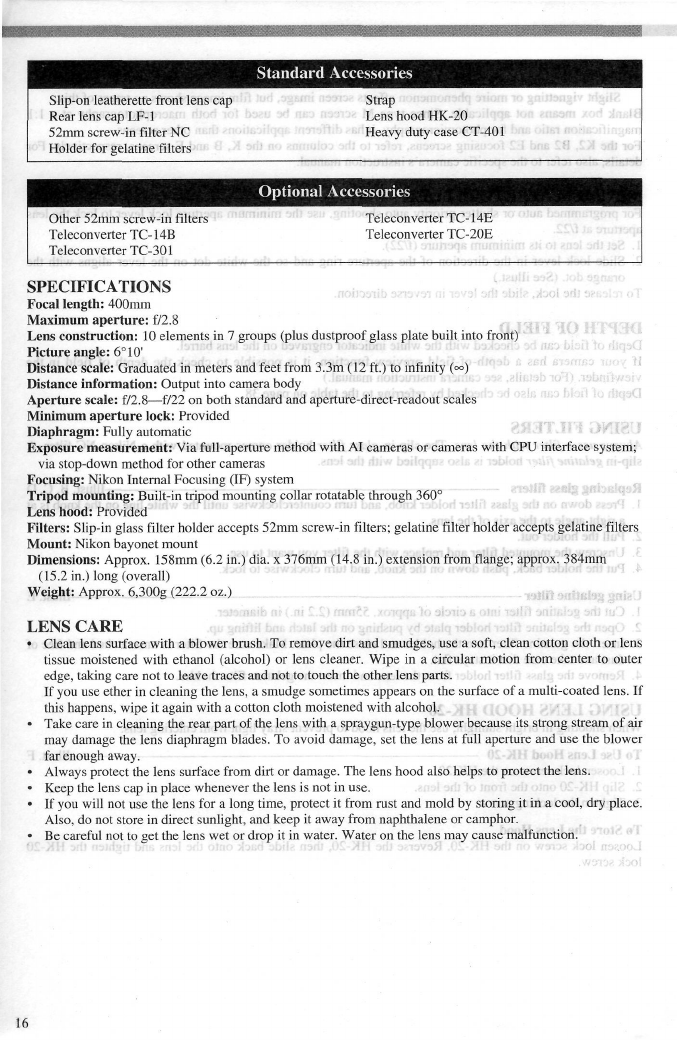
Standard Accessories
Slip-on leatherette front lens cap
Rear lens cap LF-1
52mm screw-in filter NC
Holder for gelatine filters
Strap
Lens hood HK-20
Heavy duty case CT-401
Optional Accessories
Other 52mm screw-in filters
Teleconverter TC-14B
Teleconverter TC-301
Teleconverter TC-14E
Teleconverter TC-20E
.
SPECIFICATIONS
Focal length: 400mm
Maximum aperture: f/2.8
Lens construction: 10 elements in 7 groups (plus dustproof glass plate built into front)
Picture angle:
6°
10'
Distance scale: Graduated in meters and feet from 3.3m (12 ft.) to infinity (°°)
Distance information: Output into camera body
Aperture scale: f/2.8—f/22 on both standard and aperture-direct-readout scales
Minimum aperture lock: Provided
Diaphragm: Fully automatic
Exposure measurement: Via full-aperture method with AI cameras or cameras with CPU interface system
via stop-down method for other cameras
Focusing: Nikon Internal Focusing (IF) system
Tripod mounting: Built-in tripod mounting collar rotatable through 360°
Lens hood: Provided
Filters: Slip-in glass filter holder accepts 52mm screw-in filters; gelatine filter holder accepts gelatine filters
Mount: Nikon bayonet mount
Dimensions: Approx. 158mm (6.2 in.) dia. x 376mm (14.8 in.) extension from flange; approx. 384mm
(15.2 in.) long (overall)
Weight: Approx. 6,300g (222.2 oz.)
LENS CARE
• Clean lens surface with a blower brush. To remove dirt and smudges, use a soft, clean cotton cloth or lens
tissue moistened with ethanol (alcohol) or lens cleaner. Wipe in a circular motion from center to outer
edge,
taking care not to leave traces and not to touch the other lens parts.
If you use ether in cleaning the lens, a smudge sometimes appears on the surface of a multi-coated lens. If
this happens, wipe it again with a cotton cloth moistened with alcohol.
• Take care in cleaning the rear part of the lens with a spraygun-type blower because its strong stream of air
may damage the lens diaphragm blades. To avoid damage, set the lens at full aperture and use the blower
far enough away.
• Always protect the lens surface from dirt or damage. The lens hood also helps to protect the lens.
• Keep the lens cap in place whenever the lens is not in use.
• If you will not use the lens for a long time, protect it from rust and mold by storing it in a cool, dry place.
Also,
do not store in direct sunlight, and keep it away from naphthalene or camphor.
• Be careful not to get the lens wet or drop it in water. Water on the lens may cause malfunction.
••••.••


















